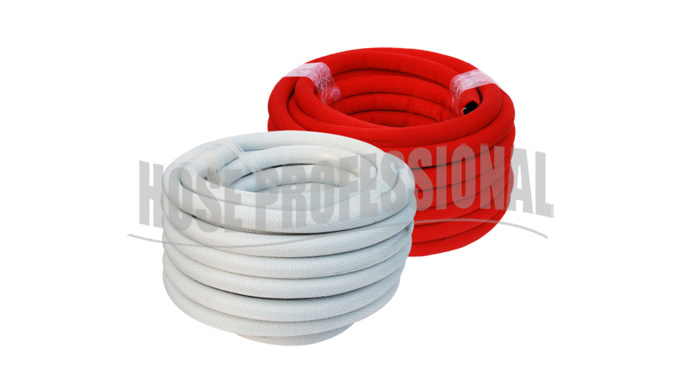The fire hose is the hose that sends the pressure water […]
The fire hose is the hose that sends the pressure water or other fire extinguishing agent output from the fire pump to the fire scene. It is the most common and commonly used water supply equipment in fire fighting. It seems that there is no special place worthy of our attention. If you study it carefully, you will find that there is a lot of knowledge "hidden" in it.
(1) Requirements for use
1. When the hose is put on the interface, it must be covered with a layer of soft protection, and then tied with galvanized iron wire or hose clamp;
2. Prevent the direct action of flame and radiant heat, and pay special attention not to make the hose contact with high-temperature objects;
3. Be careful not to contact the hose with corrosive chemicals such as oils, acids, alkalis, etc.;
4. When laying the hose, avoid sharp objects and various oils. When laying the hose vertically to a high place, use the hose hook. When laying water belts through traffic arteries, water belts should be used to protect bridges. When passing the railway, the hose should pass under the track to prevent the hose from being crushed by wheels and intermittent water supply;
5. After the hose is filled with water, you should avoid forcibly dragging it on the ground. When you need to change the position, try to lift and move it to reduce the wear of the hose and the ground;
6. If there are broken holes found during use, it should be wrapped tightly with a hose cloth. In severe winter, when the water supply needs to be suspended on the fire site, in order to prevent the water belt from freezing, the water pump must be operated at a slow speed to maintain a small water output;
7. The high-pressure-resistant hose should be connected close to the water pump. The hose after filling should be prevented from twisting or sudden bending, and at the same time, the hose interface should be prevented from collision and damage.
(2) Maintenance
1. All hoses should be classified according to their quality, numbered and stored in a book, the storage room should be well ventilated, and avoid direct sunlight to the hose;
2. The hose should be placed vertically on the hose rack in a roll shape, turned over at least twice a year, and exchanged the folds once;
3. The hose should be cleaned after use, and the hose that conveys foam must be washed carefully to protect the glue layer. In order to remove the grease on the water belt, it can be washed with warm water or soap. The frozen hose should be melted first, then washed and dried. The hose that has not been dried should not be rolled up and stored.
www.hoseprofessional.com

NINGBO JIANMEI SPECIAL HOSE CO., LTD.